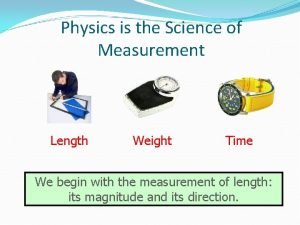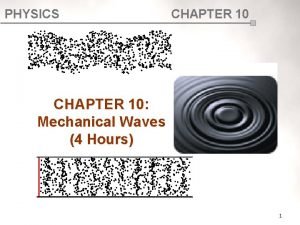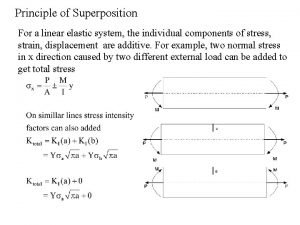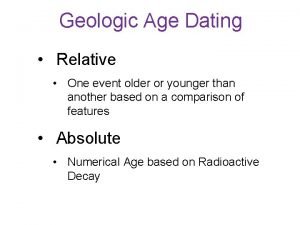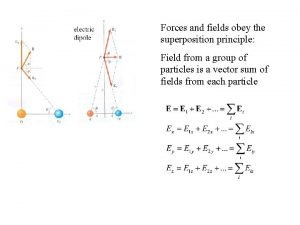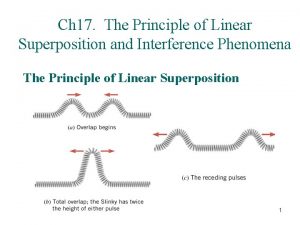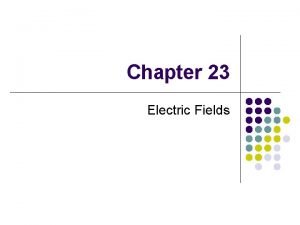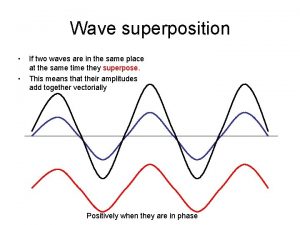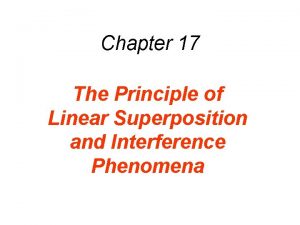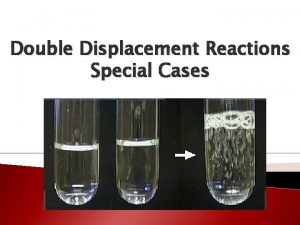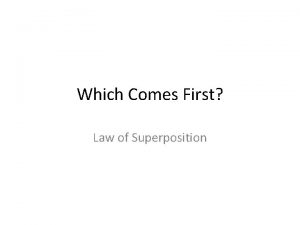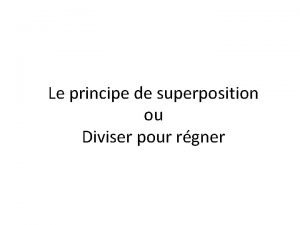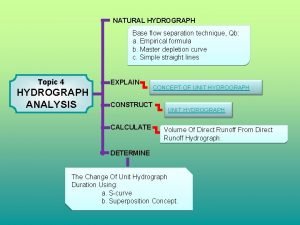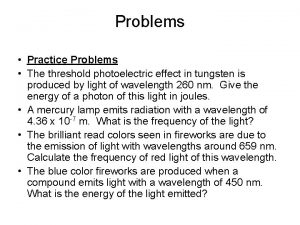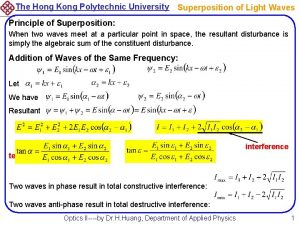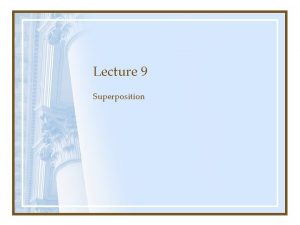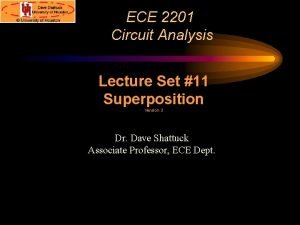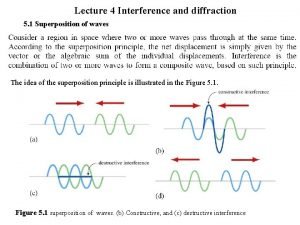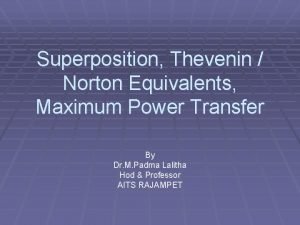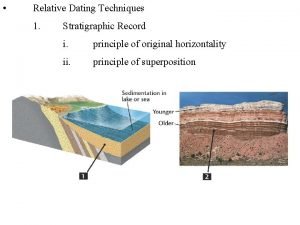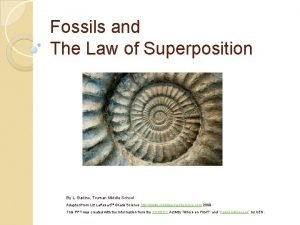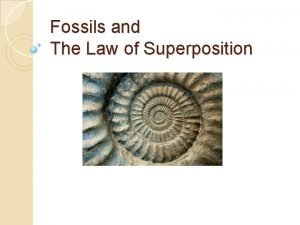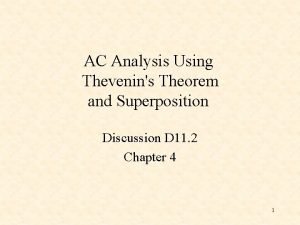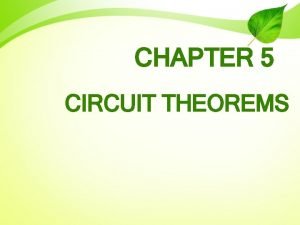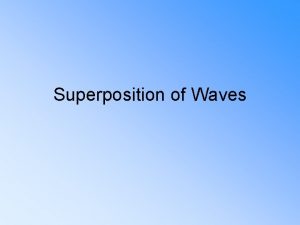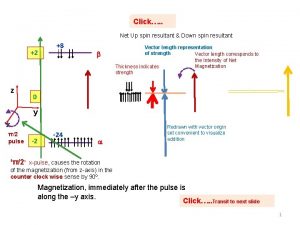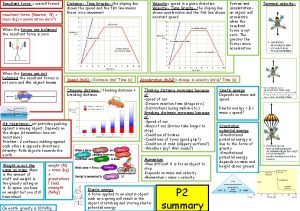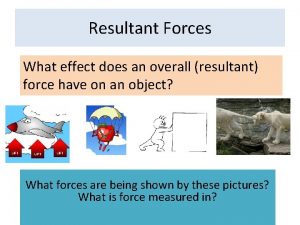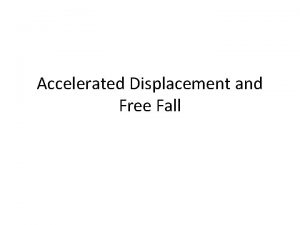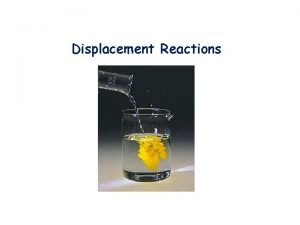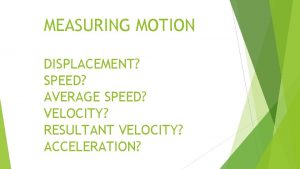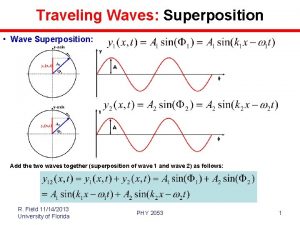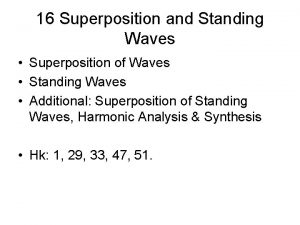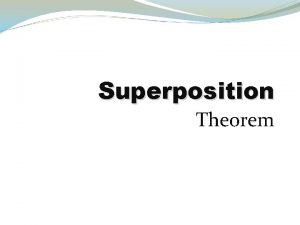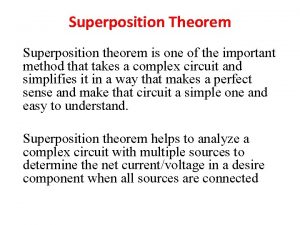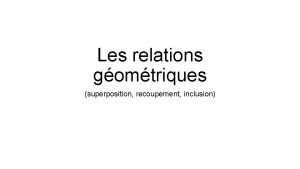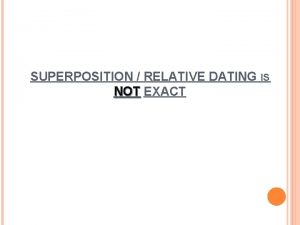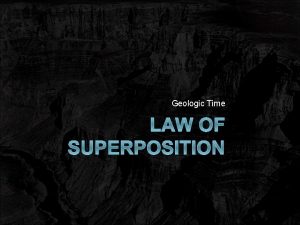The principle of superposition The resultant displacement at




























- Slides: 28

The principle of superposition The resultant displacement at any point is the sum of the separate displacements due to the two waves Eg: with a slinky coil spring

The principle of superposition The resultant displacement at any point is the sum of the separate displacements due to the two waves Eg: with a slinky coil spring

The principle of superposition The resultant displacement at any point is the sum of the separate displacements due to the two waves Eg: with a slinky coil spring supercrest

The principle of superposition The resultant displacement at any point is the sum of the separate displacements due to the two waves Eg: with a slinky coil spring supercrest

Two square waves superposing:

Two square waves superposing:

Two square waves superposing:

Superposition of sine waves:

Superposition of sine waves:

Superposition of sine waves: A square wave can be made up from several sine waves of higher frequencies

Phase changes on reflection LONGITUDINAL PULSE TRANSVERSE PULSE

Phase changes on reflection LONGITUDINAL PULSE TRANSVERSE PULSE

Phase changes on reflection LONGITUDINAL PULSE TRANSVERSE PULSE

Phase changes on reflection LONGITUDINAL PULSE TRANSVERSE PULSE

Interference effects Two dippers in a ripple tank can cause circular wavefronts to re-inforce or cancel: Re-inforcement (constructive interference) Cancellation (destructive interference)

Interference effects Two dippers in a ripple tank can cause circular wavefronts to re-inforce or cancel: Re-inforcement (constructive interference) Cancellation (destructive interference) Coherent sources (of the same frequency and phase relationship) produce a stable interference pattern.


Signal strength x Experiments with microwaves: a) The intensity of the receiver signal decreases with distance from the transmitter. x

Signal strength x Experiments with microwaves: a) The intensity of the receiver signal decreases with distance from the transmitter. b) Microwaves are reflected off metal plates – similar to light on a mirror. x

Signal strength x x Experiments with microwaves: a) The intensity of the receiver signal decreases with distance from the transmitter. b) Microwaves are reflected off metal plates – similar to light on a mirror. c) Diffraction occurs at each slit (slit width is of similar magnitude to the wavelength)

Regions of reinforcement Experiments with microwaves: a) The intensity of the receiver signal decreases with distance from the transmitter. b) Microwaves are reflected off metal plates – similar to light on a mirror. c) Diffraction occurs at each slit (slit width is of similar magnitude to the wavelength) d) An interference pattern forms with regions of constructive and destructive interference

Regions of reinforcement Experiments with microwaves: a) The intensity of the receiver signal decreases with distance from the transmitter. b) Microwaves are reflected off metal plates – similar to light on a mirror. c) Diffraction occurs at each slit (slit width is of similar magnitude to the wavelength) d) An interference pattern forms with regions of constructive and destructive interference

Regions of reinforcement Regions of cancellation Experiments with microwaves: a) The intensity of the receiver signal decreases with distance from the transmitter. b) Microwaves are reflected off metal plates – similar to light on a mirror. c) Diffraction occurs at each slit (slit width is of similar magnitude to the wavelength) d) An interference pattern forms with regions of constructive and destructive interference

Two loud speakers emitting the same note can cause loud and quiet areas in front of the speakers rarefaction compressions

Two loud speakers emitting the same note can cause loud and quiet areas in front of the speakers rarefaction compressions Regions of reinforcement (LOUD)

Two loud speakers emitting the same note can cause loud and quiet areas in front of the speakers rarefaction When compressions (or rarefactions) arrive in phase from both speakers, constructive interference occurs, creating a loud region compressions Regions of reinforcement (LOUD) Regions of cancellation (QUIET)


 Quadrant physics
Quadrant physics Waves physics
Waves physics Principle of superposition in stress and strain
Principle of superposition in stress and strain Principle of superposition
Principle of superposition Superposition of forces obey
Superposition of forces obey Principle of linear superposition
Principle of linear superposition Realtive dating
Realtive dating Superposition principle electric field
Superposition principle electric field Superposition of waves
Superposition of waves Linear superposition
Linear superposition Lateral continuity
Lateral continuity Single displacement vs double displacement
Single displacement vs double displacement Law of superposition examples
Law of superposition examples Superposition of matrices
Superposition of matrices Principe de superposition exemple
Principe de superposition exemple Natural hydrograph
Natural hydrograph Wave superposition worksheet
Wave superposition worksheet Superposition
Superposition Superposition of light
Superposition of light Superposition theorem
Superposition theorem Superposition electric circuits
Superposition electric circuits Ece 2201
Ece 2201 Superposition of waves
Superposition of waves Difference between superposition and thevenin theorem
Difference between superposition and thevenin theorem Principles of stratigraphy
Principles of stratigraphy Law of superposition fossils
Law of superposition fossils Arrange the cards
Arrange the cards Superposition theorem discussion
Superposition theorem discussion Source absorption theorem
Source absorption theorem
